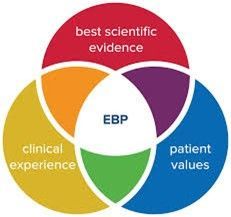A Pro Forma Should Tell You This 1 Crucial Factor
Pro formas should be realistic, not pie-in-the-sky predictions.

Every behavioral health company wants to increase their business, or at the least stabilize what they have. Grants, RFPs, and possible contracts become available to an agency and seem enticing. These opportunities for new business offer an agency more services, high rates of reimbursement, or expanded capacity to reach more clients. Yet the most important question each executive should ask is: will it be profitable? If the program can’t pay the bills, it’s not worth approaching. In the non-profit world, agencies still need to know they can cover their costs and use the proceeds towards other services.
A pro forma is one of the best tools an agency can have. Most financial information, such as a balance sheet, cash flow, or profit and loss, are backward-looking statements. They reveal information about what already occurred, not what could occur in the future. The pro forma is designed to give an idea of what could be in the future. These financial instruments predict (as well as possible) how the program will perform.
But if a pro forma doesn’t show you the 1 most crucial factor, it is not doing its job.
A good pro forma starts with assumptions, based on the potential service or program, or historical information. Then it will develop the revenue and expenses associated with the potential program, plus other costs. For revenue, it will explain how it is generated through billing, services, the rates to be used, and other factors. For expenses, it will contain salaries (the highest cost of any venture), the overhead or administrative costs, leasing, purchase of any items such as computers, and other items. After all of this is calculated, the final bottom line of profit, contribution margin, or whatever figure shows a loss or gain after the program.
The one factor a pro forma should concerns the ramp-up to achieve full profitability. Many pro formas show a program starting at full capacity as if the program begins with all the clients coming in right away. In the real world, this does not happen. There are always glitches, problems, and pitfalls that occur at the beginning of any program. Call it Murphy’s Law or any other rule, but things happen. A good pro forma starts slow, knowing these hiccups occur and accounts for them. If your accountant or financial guru doesn’t allow for a slow start in the pro forma, it’s not realistic. Ask them to have lower expectations in the beginning and it will be more fruitful for your business.




